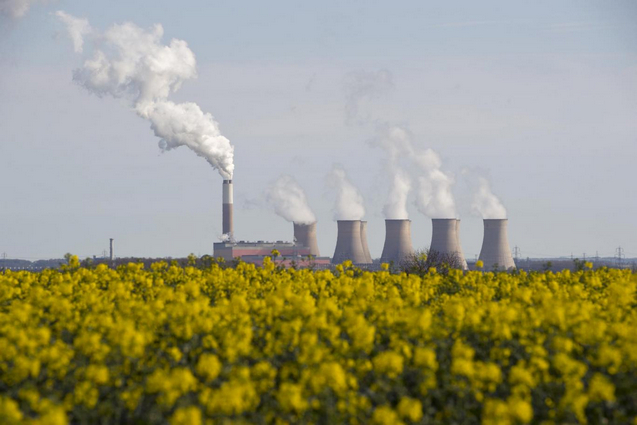Combination of carbon emissions and 'urban heat island' effect of concrete and asphalt gives rise to worst-case scenario by end of 21st century
 |
| The median city stands to lose between 1.4 and 1.7% of GDP per year by 2050 due to climate change. Photograph: Anadolu Agency/Getty Images |
Such a temperature spike would have dire consequences for the health of city-dwellers, rob companies and industries of able workers, and put pressure on already strained natural resources such as water.
The projection is based on the worst-case scenario assumption that emissions of greenhouse gases continue to rise throughout the 21st century.
The top quarter of most populated cities, in this scenario, could see temperatures rise 7C or more by century's end, said a study in the journal Nature Climate Change.
For some nearly 5C of the total would be attributed to average global warming.
The rest would be due to the so-called "urban heat island" effect, which occurs when parks, dams and lakes, which have a cooling effect, are replaced by concrete and asphalt – making cities warmer than their surrounds, the researchers said.
"The top 5% [of cities by population] could see increases in temperatures of about 8C and larger," study co-author Francisco Estrada of the Institute for Environmental Studies in the Netherlands said.
Estrada and a team used different projections of average planetary warming, combined with the UHI effect and potential harms, to estimate the future costs of warming on cities.
The median city, right in the middle of the range, stands to lose between 1.4% and 1.7% of GDP per year by 2050 and between 2.3% and 5.6% by 2100, they conclude.
"For the worst-off city, losses could reach up to 10.9% of GDP by 2100," wrote the team.
UHI "significantly" increased city temperatures and economic losses from global warming, they added.
This meant that local actions to reduce UHI – such as planting more trees or cooling roofs and pavements – could make a big difference in limiting warming and minimising costs.
Cities cover only about 1% of earth's surface but produce about 80% of gross world product and account for around 78% of energy consumed worldwide, say the researchers.
They produce more than 60% of global carbon dioxide emissions from burning coal, oil and gas for fuel.
The world's nations agreed in Paris in 2015 to the goal of limiting average global warming to two degrees centigrade over pre-industrial revolution levels by curbing greenhouse gas levels in the Earth's atmosphere.
For the latest study researchers used data from the world's 1,692 largest cities for the period 1950 to 2015.
Links
- A global economic assessment of city policies to reduce climate change impacts
- Donald Trump will make 'final decision' on Paris climate deal next week
- Trump warming to reality of climate change, says senior Chinese official
- Climate change a Chinese hoax? Beijing gives Donald Trump a lesson in history
- Climate change: global deal reached to limit use of hydrofluorocarbons
- Five Pacific islands lost to rising seas as climate change hits
- Case for climate change is overwhelming, say scientists
- Climate change study forces sceptical scientists to change minds
- Scientists attribute extreme weather to man-made climate change
- Scientists use Thoreau's journal notes to track climate change






